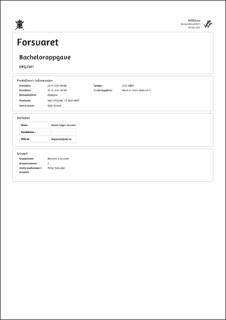| dc.description.abstract | Additive manufacturing (AM) presents a possibility to enhance the endurance of the naval
ships and their ability to conduct operations. This thesis aims to present the advantages
and the challenges one faces with the production of metal parts through the 3D printing
method fused filament fabrication (FFF).
Implementing AM techniques in various applications would make it necessary to estab lish standards to qualify and certify parts to ensure their reliability, especially under real istic cyclic loading conditions. A rotating bending fatigue test was therefore performed
on test specimens printed in 316 stainless steel, with the intention of getting a rough S-N
curve and identifying the printed material’s endurance limit.
Fused filament fabrication is based on layer-by-layer manufacturing, and defects like poor
adhesion, voids, porosity and shifted layers can occur. The defects can be difficult to
notice and can lower the properties of the material drastically. Implementing FFF parts
can therefore be difficult in industries where reliability and repeatability is crucial.
The printed specimens suffered from poor adhesion between layers and twisted during
the sintering process which involves heat treatment. Due to limited time and resources, it
was only possible to print five specimens. The results were very inconsistent, and some
tests were deemed unusable. None of the specimens could withstand a lot of cycles. At
most 58200 cycles at 23,7 MPa and 5700 cycles at 47,4 MPa, which is very little com pared to for example stainless steel manufactured with selective laser melting, another
AM method, which has an endurance limit of about 250 MPa.
The main impression of the technology is that there are many variables and parameters
that can affect the quality of the metal prints, and the maturity of the technology is not at
the level where it can offer reliability and repeatability. Nevertheless, it is a promising
technology. An alternative would be to print parts in reinforced composites which is
widely researched, and already a focus area in the Norwegian Navy. Selective laser melt ing is also a technology worth looking into for additive manufacturing of metal. | en_US |
